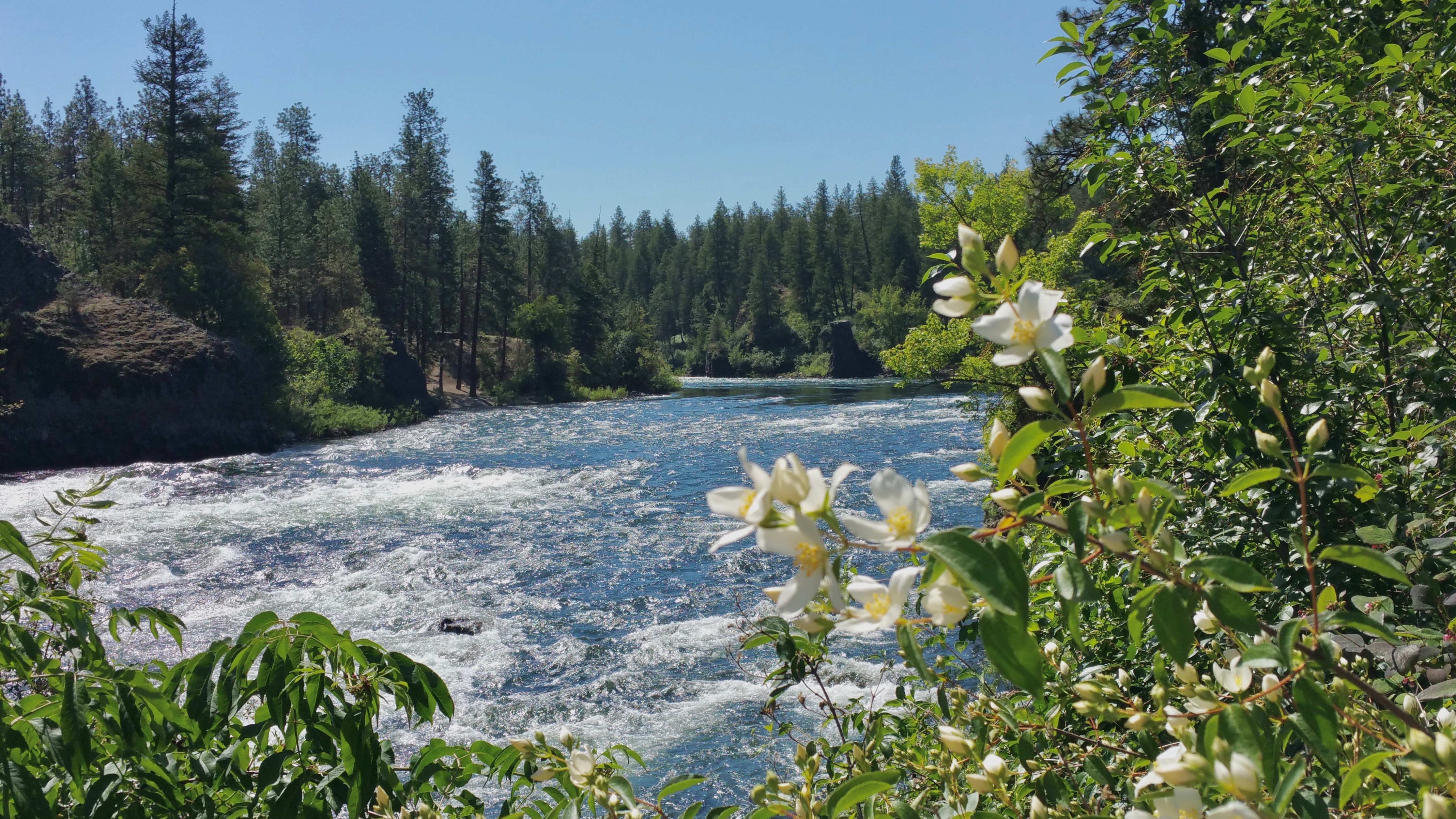
Spokane River with flowering syringa flowing in the canyon of Riverside State Park. The State Park is below the City of Spokane and the outflow pipe for the City's sewage treatment plant, a source of PCBs polluting the river. Further downstream is the reservation for the Spokane Tribe of Indians, a fish-eating tribe. Photo credit: Upper Columbia River Group, Sierra Club
By John Osborn MD, Spokane River Team, co-coordinator
Link: Motion for Summary Judgment
The Spokane River has twin personalities. Flowing 111 miles from Lake Coeur d’Alene in Idaho to the Columbia River (Roosevelt Reservoir), it is sublimely beautiful. Once spawning grounds for huge runs of returning salmon, this river remains a home for fish, osprey, and other wildlife. The river offers unparalleled urban refuge for Spokane, the state’s second largest city. As former Interior Secretary Bruce Babbitt said, “The Spokane River in the middle of this city is the best kept secret in the United States today.”
Unfortunately, the beauty of the Spokane River is marred by rampant pollution. The main culprit being Polychlorinated biphenyls (PCBs), highly toxic, man-made chemicals.
The Washington Department of Health has issued a Spokane River health advisory for PCB-contaminated fish because it has such adverse effects on animals and humans--including causing cancer.
The particularly nefarious aspect of PCBs is that they move up the food chain. This means that even tiny concentrations in river water can result in high concentrations in fish and other river life. This build-up of PCBs in fish can harm people who eat fish from the Spokane River.
That’s why the Sierra Club is asking a federal judge: rule on our 10-year-old lawsuit to compel the U.S. Environmental Protection Agency (EPA) to issue a PCB cleanup plan for the Spokane River.
The federal Clean Water Act, passed in 1972, requires that our nation’s waters be fishable and swimmable. When a river is polluted with PCBs, the law requires binding cleanup targets before issuing permits that add more PCBs. The Spokane River has no cleanup plan, but state and federal agencies have issued pollution permits anyway - without numeric limits.
“We need clean, flowing water for the return of salmon,” said Kathy Dixon of the Spokane River Team. “Salmon along with our children and the river’s life are compelling reasons to comply with federal law and move forward with a cleanup plan.”
This has been a decades-long fight for the Spokane River.
-
In 2011, Sierra Club and the Center for Environmental Law & Policy (CELP) filed a citizen lawsuit against EPA.
-
The Spokane Tribe of Indians, downstream from pipes discharging PCBs to the river, intervened in support of our citizen lawsuit.
-
The Washington Department of Ecology (WADOE), Spokane County and Kaiser intervened to defend EPA.
-
U.S. District Court Judge Barbara Rothstein ruled in March 2015 that EPA’s failure to require a clean-up plan was an abuse of discretion and ordered EPA to submit a plan to the Court by July 2015.
During the past five years, Spokane River advocates have waited patiently for WADOE and EPA to complete a cleanup plan and begin its implementation.
“The days of using the Spokane River as a chemical dump are over,” said Tom Soeldner of Sierra Club’s Spokane River Team. “We waited patiently - year after year. Now we are asking the federal courts to stop polluters from flushing PCBs into the River.”
The Spokane River Team is a project of Sierra Club’s Upper Columbia River Group with state chapter support. We are represented by Marc Zemel of Smith & Lowney, a Seattle firm specializing in Clean Water Act litigation.
Interested? Want to help? Contact John Osborn MD